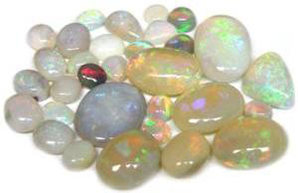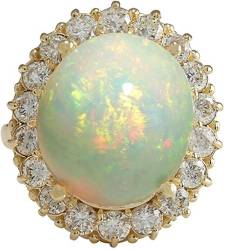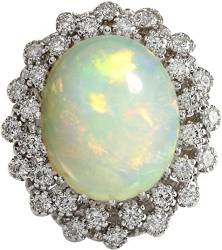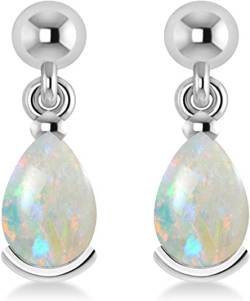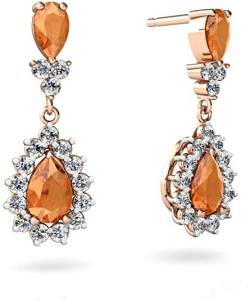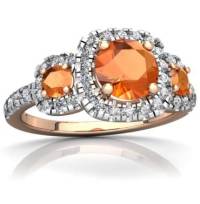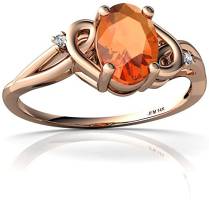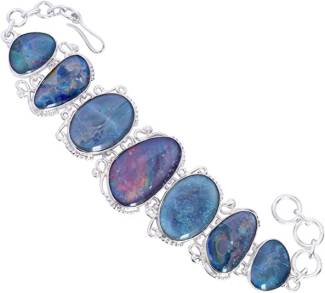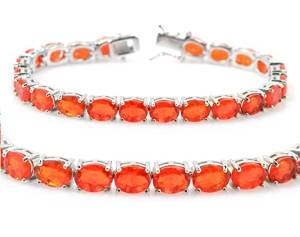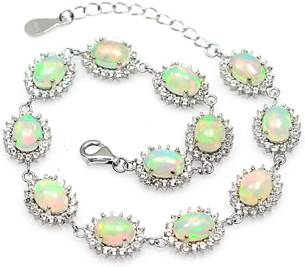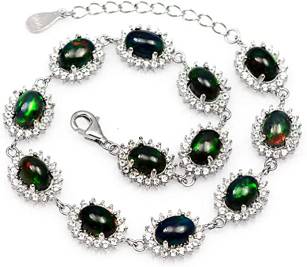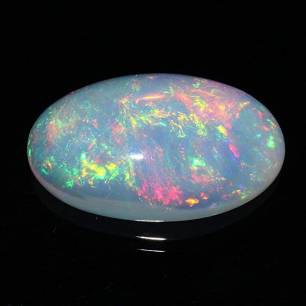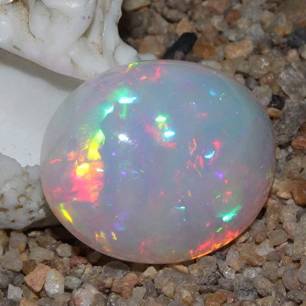Opal is the birthstone for October (The Scorpio and Libra Birthstone). It is also the gem of the 14th and 18th wedding anniversary.
Multi-color Australian Loose-Opal- Gemstones
The myriad mystifying colors of Opal fascinate mankind more than any other gemstone. This chameleon gemstone hoards the colors of heavens and earths in its kaleidoscopic body.
The dreamlike play of colors, give Opal a special place in the world of gems. When you consider other gems, the stones of a species are similar owing to their close crystalline structure. But not Opal. No two Opals are alike. Each gem struts with its own set of resplendent colors. Flecks of flaming red, yellow, purple green and blue flash across the gem inspiring awe and admiration.
In gemological circles, origin of the name Opal is a topic of debate. The most plausible line of reasoning suggests that it is adapted from the Indian Sanskrit word upala meaning “valuable stone.”
The term first appears in Roman references around 250 BC. At the time these valuable stones were being supplied from India. Other names for the gemstone fell from use after 250 BC. Some theories submit that the name has been adapted from the Roman term opalus or the Greek word Opallios.
Click On The Images
Opal is the gem-quality strain of hydrated amorphous silicon dioxide. It is hydrated means that it always contains 3% to 30% of water. It is amorphous means that it is without a crystalline structure and without a definite chemical composition. More accurately it is a “mineraloid” rather than a “mineral”.
Origins of Opal
The Bedouins believed that opals were filled with lightning. The notion is thrilling. In reality, another closely related natural phenomena creates the beguiling colors: rain. It happens when heavy rains bathe the desert outback regions of our planet with cascading waters. The water seeps deep underground into the underlying rocks. While doing so, it also dissolves and carries silica to the lower regions.
Most of this water evaporates with the return of the hot and dry weather. However, the silica solute is left behind in the rock cracks. This residue takes the form of solid sub-microscopic Silica spheres. Over the course of time, the residual silica metamorphoses into the beautiful Opal.
Opal is renowned for its inimitable spectacle of flashing rainbow colors called play-of-color. However, not all gemstones display this play-of-color. There are two distinctive classes of opals — precious & common. Precious opal displays play-of-color, while the common one does not.
Click On The Images
The play-of-color consists of a brilliant range of rainbow colors. Iridescent colors flash, sparkle and change with the angle of viewing. This rare effect is also referred to as “fire” or “flash”.
The cause of this property unique to Opals was discovered by Australian scientists in the 1960s after scrutiny under electron microscopes.
When the sub-microscopic Silica spheres in this gemstone are of a particular size & are very precisely arranged, they conjure this play of color. Opals have a distinctive internal physical composition. Infinitesimal spheres of silicon interspersed with water create a neatly stacked inner structure. The grid like pattern is akin to layers of Ping-Pong balls in a box. At times, these spheres are consistent & orderly in their arrangement leading to colorful precious Opal.
Opals occur in a multitude of colors including colorless, white, creamy, blue, pale red, pale yellow, gray, brown & black. Yellow, blue & green are the most common. Violet, red & orange are the rarest colors seen through play of color.
Click On The Images
Gem-quality precious Opal is a magnificent chameleon of a gemstone. An individual stone can flash all colors of the visible spectrum. The splendid play of color can surpass the “fire” of a diamond. Price per carat of such fine specimens can exceed the most pricey rubies, emeralds and diamonds.
Opals may also display chatoyancy (cat’s-eye) or asterism (star) phenomena. Both the visual effects, however, are pretty rare. This is because Opal is not endowed with a repeating crystal lattice.
Optimum arrangement of the play-of-color patches, correct orientation of stripe structure caused by misalignment of the tiny silica spheres, and expert cutting come together to create and maximize chatoyancy in opal.
On the other hand, large parallel planes with play-of-color intersecting to form a hexagonal pattern generate the six-rayed star.
Opal History And Lore
.
William Shakespeare called Opal the “Queen of Gems”.
In 75 A.D. the Roman Historian Pliny wrote about this gemstone in the following manner: “For in them you shall see the living fire of ruby, the glorious purple of the amethyst, the sea-green of the emerald, all glittering together in an incredible mixture of light.”
Pliny further observed, “Some opali carry such a play within them that they equal the deepest and richest colors of painters. Others simulate the flaming fire of burning sulphur & even the bright blaze of burning oil.” The historian marveled that this kaleidoscopic gem encompassed the red of ruby, the green of emerald, the yellow of topaz, the blue of sapphire, and the purple of amethyst.
Romans believed Opal to be the most powerful and precious of all gemstones as it exhibited the colors of other gems.
Among some cultures this gemstone is deemed to have supernatural origins. The nomadic Bedouins of Arabia believe that opals fell from the sky during thunderstorms and contain lightning.
Fire Opal Gemstone 925 Solid Sterling Silver Bracelet
Click On The Image
Opal is regarded as an October birthstone. As such, some people deem it to be unlucky for people born in other months to wear it. This erroneous superstition originated from Walter Scott’s novel “Anne of Geierstein” written in the 1800s and not from any ancient belief or experience. Nonetheless, the gemstone has been regarded as the luckiest and most magical of all gems throughout history.
The gemstone continues to be a symbol of hope, purity, and truth for Europeans.
Ancient Greeks believed that opals gave the gift of prophecy to their owners and guarded them from disease.
Opal’s Rise in Our Fashion World
Cartier pushed Opal into huge prominence twice during the last decade. Its high value Chimera collection of 2008 accorded Opal a place of prominence. Once again, Opal occupied a place of pride in the (Sur)Naturel collection of 2020. Both events fuelled Opal’s spectacular rise in the world of jewelry fashion. Today, the gem has found its way into virtually every jewelry fashion house and into our hearts.
Does Opal Bring Bad Luck?
Blame it on Sir Walter Scott’s 1829 romantic novel, ‘Anne of Geierestein.’ The leading lady of the novel is completely besotted with her Opal jewel. Ultimately, the jewel spirits her away. The book marred the reputation of Opal. People were taken in by the false notion that the gem was a harbinger of bad luck.
Princess Alexandra too, fell for the superstition. On ascending the throne, she had the allegedly ‘unlucky opals’ removed from Queen Victoria’s crown. The new queen redesigned the jewel with Burmese rubies. Her action further fanned the superstition. Some people even smashed the gemstones rather than passing them on as heirlooms.
Prior to this unfounded fear taking root, opal was regarded as a stone of good health and prosperity. The Romans accepted it to be the most precious and powerful among all gems as it possessed the colors of all gemstones.
15.60 CT Natural Ethiopian Welo Fire Orange Cut Opal Gems October Birthstone 925 Sterling Silver Tennis Bracelet
Click On The Image
Also, as the nineteenth century was ending, Australian Opals started appearing in the market. The extraordinary beauty of these stones soon captivated everyone’s attention. Needless to say, the gem regained its lost glory.
What are Black Opals?
The term Black Opal is a misnomer. It does not actually denote a Black Opal. The name describes an Opal species of dark body tone. The underground ‘Lightning Ridge’ mines in Australia primarily yield this variety.
Some specimens brandish a flourish of red flashes on the dark background. They look very much like the smoldering embers of an Australian bushfire. As such, they are aptly called Bushfire Opals.
How Hard Are opals?
Opal is a relatively softer stone. It ranks 5 on the Moh’s scale of hardness. The softness makes the stone susceptible to cracks and breakage. Hence, it is unsuitable for setting in rings.
Moreover, this stone needs a lot of pampering and care. Heat Exposure cracks the stone open. It is paradoxical. The same water content that grants so much beauty and light to it also renders this gem delicate and frail.
Unscrupulous dealers have also been resorting to fraud while selling this stone. Their modus operandi is to sandwich slender opal wafers between thin glass sheets. It gives the illusion of a larger gem. But also adds to the perception of fragility of the gemstone.
Why are opals cut into non-faceted cabochons?
Opals illuminate into their blazing rainbow colors as a consequence of light bouncing off sub-microscopic Silica spheres in the gem’s body. They do not need facets to perform this play of light. Furthermore, the domed surface area of a cabochon shape is well suited for the color extravaganza. Therefore, these gems are not faceted and usually cut into cabochons.
Click On The Images
Rarity and Value of opals.
Precious Opals stand apart from their ordinary counterparts by virtue of their vivid colors.
The background color of a precious colorful specimen can either be light or dark. Such pieces are very rare. Stones displaying dark background tones are particularly treasured. The contrast between the dark background and the kaleidoscopic foreground makes such stones highly sought after. They are called black Opals. The Lightning Ridge region of Australia mostly throws up such stones.
Multi-colored stones holding white background color are acclaimed as white opals. Flamboyance of their colors determines their value.
Sources.
Earlier, Slovakia was the solitary source of Opal. But later on, good quality Opals were unearthed in the dry outback regions of Australia. These days, Australian, Mexican and Welo opals are in high demand. Currently Australia accounts for 95% of world suply. Unsurprisingly, it is the national gemstone of Australia.
Those From Australia:
Opals inherited ideal formative conditions in the dry and spartan regions of Australian outback. The region started producing these gems commercially around 1890. Today it is one of the foremost sources of supply.
Marie Walshe, founder of British jewellery brand Sorrel Bays says “This particular opal (from Australia) is very magical and becomes a different gem in different lights. It moves from milky white to transparent to luminescent blue, and has mesmerising flickers of light particles.”
Those From Mexico:
Mexican opals are conspicuous for their flaming colors. They are aptly called Fire opals. The red-orange color of these gems originate from trace impurities of iron oxide. Their energetic colors are thought to induce vigor & vitality.
Those From Ethiopia:
Fire Opals are also found in Ethiopia. Gems from this region are resplendent with flashes of neon red. They also show splendid streaks of green, orange, brown, yellow and – the most exceptional of them all – blue.
Click On The Images
The Wollo province of Ethiopia threw up a new species of fire opals in the year 2008. Most of the stones of this region have reddish or yellow body color. They also exhibit a vivid play-of-color. These are the highly-coveted ‘Welo opals.’
The secretive shimmer of opals gives them an almost magical quality. As such, the gemstone inspires an insatiable passion in the heart of gem-lovers.
Taking Care of Gemstone Opal:
Despite their beauty, opals are a delicate gem. Their use in jewelry requires special care.
As jewelry stones, opals have two critical weaknesses: a low Mohs hardness and a high water content.
A relatively soft stone, opals have a Mohs hardness of 5.5 to 6.5. In other words, they are softer than even household dust. Dust can scratch opals due to their higher hardness of 7.
Due to the way opals form underground, they all contain water. Water constitutes 6% to 10% of Gem-quality opals. As a result, they can be affected by sudden changes in temperature. An opal might fracture if you move from an air-conditioned room to the outdoors on a hot summer day. Likewise, moving from a warm room to the cold outdoors in winter can splinter the stone. Furthermore, loss of water content can cause the gem to lose ‘play of color’ or even make it crumble.
Safety Suggestions For Wearing Opals:
In spite of aforesaid weaknesses, there are ways to wear opal jewelry that keep the gemstone safe.
The right setting, especially for rings, can help you enjoy your opals for many years. A number of settings protect opals from damage. They can be bezel settings, solid backings, raised prongs, and cage-style settings.
The durability of the stone itself is also enhanced by opal doublets and triplets.
The gem is also less susceptible to damage if worn as a pendant or on brooches. You can further extend the life of your opal jewelry by wearing it occasionally rather than daily.
In this manner, you should care for and store your opals responsibly. And you will enjoy jewelry made from these beautiful stones for a long time.
See More Gemstones As Follows
